Building an affordable home comes with a wide range of options. From prefabricated houses to shipping container homes, tiny houses, eco-friendly dwellings, and split-level-style homes, there are choices to fit various budgets and preferences.
Finding cheap new construction housing isn’t always easy.
The key to cost reduction lies in using economical materials, keeping designs simple, and exploring financing options.
Additionally, understanding the pros and cons of building versus buying helps make an informed decision. Read on for insights into affordable house types and strategies to minimize expenses in home construction.
How to Determine Affordability in Massachusetts Home Building
Determining the affordability of building a home involves considering various factors that impact the overall costs.
By carefully assessing these aspects, you can make informed decisions about your budget and explore financing options that align with your needs and resources.
Factors to Consider in Massachusetts Home Building Costs
When analyzing home building costs, several key factors come into play. These include:
- Size and layout of the desired home
- Materials and construction techniques
- Location and land expenses
- Permits and regulatory requirements
- Labor and professional services
- Utility connections and infrastructure
It’s essential to carefully evaluate these variables to estimate the overall expenses of constructing your dream home.
Determining Your Budget for Home Building in Massachusetts
Establishing a realistic budget is crucial when considering home construction. Consider your financial capabilities, including savings, income, and potential financing options.
Determine your comfort level regarding monthly mortgage payments and ensure you understand your financial commitments throughout construction.
Consulting with financial advisors, mortgage lenders, and builders can guide you in establishing an appropriate budget for your home-building project.
Understanding Construction Loans and Financing Options
Construction loans are specific financial instruments designed to support the building process. They provide funds to cover construction costs, ensuring that expenses are managed effectively. Understanding the terms, interest rates, and repayment options associated with construction loans is vital.
Additionally, explore other financing options that may be available, such as government-backed loans, grants, or assistance programs. Understanding the various financing avenues empowers you to make informed decisions about funding your affordable home build.
Affordable Types of Houses to Build in Massachusetts
When building an affordable home, several options offer both cost-efficiency and a range of appealing features. Let’s explore the following types of houses that fit within a more budget-friendly range:
Prefabricated Homes: Cost-Efficient and Eco-Friendly
Prefabricated or prefab homes are an excellent choice for those seeking affordable housing. These homes are built in a factory and then transported to the desired location for assembly.
Prefab homes are known for their cost efficiency, ranging from $40,000 to $70,000. They offer affordability, and many prefab homes are eco-friendly, incorporating sustainable materials and energy-efficient designs.
Shipping Container Homes: A Trendy and Affordable Option
Shipping container homes have gained popularity as a trendy and affordable housing solution. These homes are a cost-effective alternative to traditional construction methods by utilizing repurposed shipping containers.
With prices as low as $30,000, shipping container homes offer a budget-friendly option for those looking to build their unique dwelling.
Tiny Homes: Maximizing Space with Minimal Costs
Tiny homes, also known as micro houses or small houses, have emerged as a popular choice for affordability and minimalistic living. These compact dwellings typically range from 100 to 400 square feet, making them an economical option for those seeking to downsize or reduce costs.
Tiny homes can be custom-built or purchased as pre-built structures, with prices ranging from $20,000 to $75,000 depending on customization and amenities.
Eco-Friendly Homes: Sustainable and Affordable Living
Building an eco-friendly home offers the dual benefit of sustainability and affordability. Homeowners can reduce their long-term energy costs and minimize their environmental footprint by incorporating energy-efficient features like solar panels, efficient insulation, and water-saving systems.
While the initial construction costs may be slightly higher, the savings over time make eco-friendly homes attractive for those looking to build cost-effective and sustainable housing.
Split Level Homes: Traditional and Budget-Friendly
Split-level style homes, with their one-story layout and open floor plans, provide a traditional yet budget-friendly option for home construction. These homes are characterized by their simplicity and functionality, making them a cost-efficient choice.
Basement space is quickly finished creating additional space cheaply on a cost-per-square-foot basis.
With a focus on single-level living and efficient use of space, split-level homes offer affordability without compromising comfort or style.
Individuals can find the perfect balance between cost and desired features by considering these affordable types of houses to build.
Whether opting for a prefab home, shipping container home, tiny home, eco-friendly home, or split-level house, each option provides a unique opportunity for homeowners to create a space that fits their budget and lifestyle.
These are all excellent options for lower-income home buyers.
Strategies to Reduce Costs in Home Construction
When it comes to building a home, there are various strategies you can implement to help reduce costs without compromising on quality or functionality.
These strategies focus on choosing affordable building materials, simplifying design and layout, taking a do-it-yourself (DIY) approach, and finding cheap land and building sites.
Choosing Affordable Building Materials
One effective way to minimize costs in home construction is by selecting affordable building materials. Consider alternative options that are both budget-friendly and durable.
For example, you can opt for cost-effective laminate or vinyl flooring instead of expensive hardwood flooring that still offers aesthetic appeal and durability. Additionally, explore discounted or recycled materials for countertops, cabinetry, and roofing features.
Simplifying Design and Layout without Sacrificing Functionality
Creating a simple and efficient design can help save money during construction. Avoid complex architectural details, intricate floor plans, or unnecessary additions that can drive up costs.
Focusing on functionality and essential features can streamline construction and reduce expenses. Efficient use of space, open floor plans, and versatile layouts are all factors to consider to balance functionality and cost-efficiency.
DIY Approach: Saving Money through Sweat Equity
Another way to cut down on construction costs is by taking a hands-on approach and embracing the do-it-yourself (DIY) mentality. You can undertake specific tasks instead of hiring professionals if you have the necessary skills and expertise. This can include painting, landscaping, or even some minor electrical or plumbing work.
However, it’s essential to recognize your limitations and hire experts for specialized tasks to ensure quality and safety.
Finding Affordable Land and Building Sites
The cost of land can significantly impact the overall budget of your home construction project. Research and explore different areas to find affordable land options. Consider locations further from city centers or up-and-coming neighborhoods where land prices may be more affordable.
Additionally, keep an eye out for land that requires minimal site preparation or has existing infrastructure, as this can also help reduce construction costs.
By implementing these strategies and being mindful of cost-saving opportunities, you can successfully reduce expenses during home construction without compromising on quality or your long-term vision for your dream home.
There are many considerations for buying land, so do plenty of research.
Considerations when Building vs. Buying
Several essential factors must be considered when deciding between building a new home or buying an existing one. Each option has advantages and drawbacks, and understanding these considerations can help you make an informed decision.
Customization and Personalization in Home Building
One of the significant benefits of building your own home is the ability to customize and personalize it according to your preferences.
You can choose the layout, design, finishes, and materials, ensuring that every aspect reflects your unique style and needs. This level of customization may not be achievable when buying an existing home, where you may need to compromise on certain features or invest in renovations to suit your taste.
Potential Hidden Costs of Buying an Existing Home
While buying an existing home may seem more convenient, knowing the potential hidden costs is essential. These costs can include necessary repairs, maintenance, and renovations to make the house suitable for your needs.
Additionally, older homes may require updates to meet current building codes or improve energy efficiency. Evaluating these potential costs is crucial to accurately assess the affordability of buying an existing home.
Timeframe: Building vs. Buying a Home
The timeline for building a new home versus buying an existing one is another critical consideration. Constructing a house from scratch involves various stages, from finding the right location to completing the construction process.
Buying a new home generally takes longer than purchasing an existing one. If time is of the essence, buying an existing home may be preferable, as it allows you to move in more quickly than waiting for a new build’s completion.
Maintenance and Repairs: New Construction vs. Existing Homes
Maintenance and repair requirements also differ between new construction and existing homes. Newly built homes typically require less immediate maintenance and repairs, as everything is unused and in good working condition.
On the other hand, older homes may have aging systems or components that need attention, potentially resulting in higher maintenance costs. Some even have items that would not meet today’s building codes.
Understanding the ongoing maintenance needs of both options is vital to determine the long-term affordability of the chosen route.
Long-Term Value and Investment Potential in Affordable Home Building
When considering affordable home building, assessing the long-term value and investment potential of different house types is essential. By understanding factors such as resale value, energy efficiency, and future expansion options, you can make an informed decision that benefits you financially over time.
Resale Value and Appreciation of Different House Types
One factor to consider when building an affordable home is the potential resale value and appreciation. While housing markets can fluctuate, certain house types hold their value better than others.
For example, prefabricated homes have gained popularity for their durability and quality, which can positively impact their resale value. Similarly, energy-efficient and eco-friendly homes tend to have higher market demand and can command higher prices in the future.
Energy Efficiency and Cost Savings over Time
Energy efficiency is not only environmentally friendly but also offers long-term cost savings. Building an affordable home with energy-efficient features such as insulation, solar panels, and energy-efficient appliances can reduce utility bills over time.
In addition, many home buyers are increasingly prioritizing energy efficiency, which can make your home more attractive for resale. Investing in energy efficiency during construction can capture immediate and long-term financial benefits.
Future Expansion and Adaptability of Affordable Homes in Mass
Another aspect to consider in affordable home building is the potential for future expansion and adaptability. As your needs change over time, having the flexibility to add extra rooms, expand living spaces, or accommodate new functionalities can be invaluable.
Some house types, like prefabricated and modular homes, offer modular designs that allow for easy expansions. With proper planning and design foresight, you can future-proof your affordable home, enhancing its value and livability for years.
- Consider houses with good resale value, such as prefabricated and eco-friendly homes.
- Opt for energy-efficient features to save on utility bills and attract future buyers.
- Choose a home design that allows for potential expansions and adaptability.
Final Thoughts
By considering the long-term value and investment potential of affordable home-building options, you can choose wisely that fits your budget and secures your financial future. Remember to weigh the benefits and drawbacks of each house type, analyze market trends, and plan for the evolving needs of your household.
Build a home that meets your present needs and offers long-term value, sustainability, and adaptability for years.



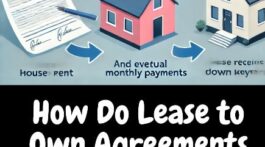
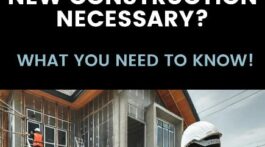
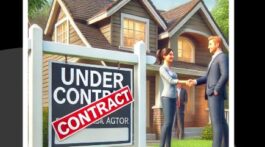


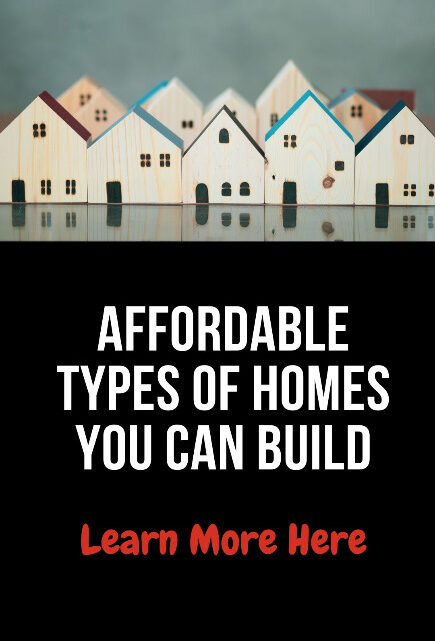
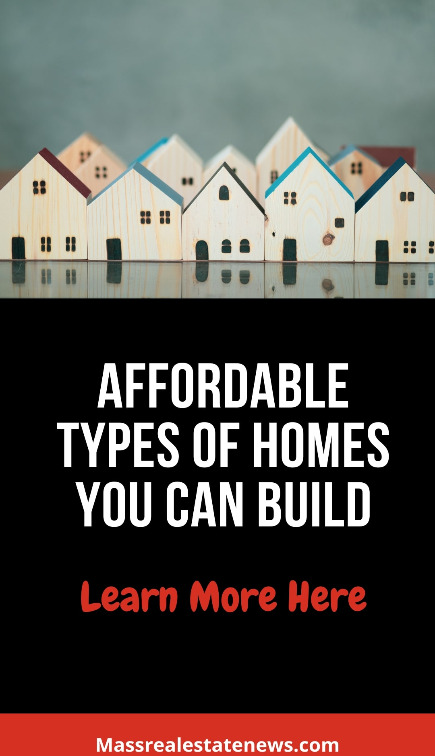
No Comment